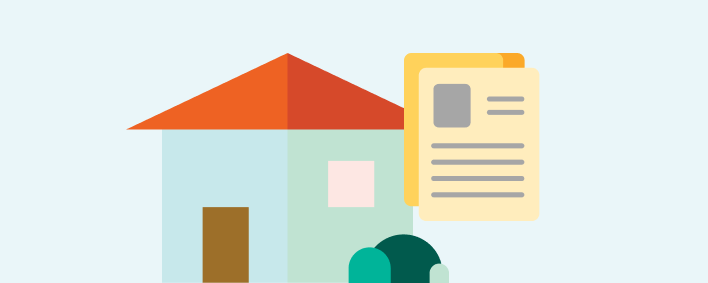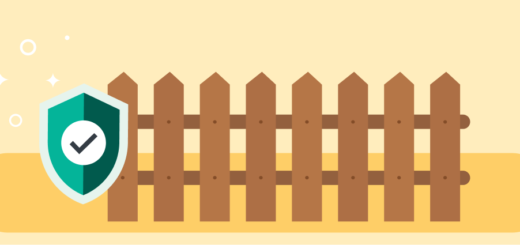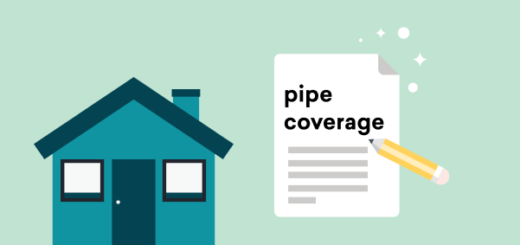What Is an HO-1 Insurance Policy?
Our goal is to give you the tools and confidence you need to improve your finances. Although we receive compensation from our partner lenders, whom we will always identify, all opinions are our own. By refinancing your mortgage, total finance charges may be higher over the life of the loan.
Credible Operations, Inc. NMLS # 1681276, is referred to here as “Credible.”
Having a home insurance policy is critical to protecting your investment — and most mortgage lenders require borrowers to insure their homes.
But not all home insurance policies are created equal. Some offer more protection than others. An HO-1 policy is a more basic type of homeowners insurance, whereas HO-3 and HO-5 policies are more comprehensive.
Here’s what you need to know about HO-1 home insurance policies:
What is an HO-1 policy, and how does it work?
An HO-1 policy is a very minimal home insurance policy. It offers protection only for your home’s structure — and sometimes the belongings within it — and it’s not widely available from major insurance providers. Only 1.62% of all policies written in the U.S. were HO-1s in 2019, according to data from the National Association of Insurance Commissioners (NAIC).
With Credible, you can easily compare homeowners insurance quotes from top carriers.
What does an HO-1 policy cover?
An HO-1 policy covers damage to your property from 10 specifically named perils (events that cause damage). Other types of homeowners policies, particularly HO-3s and HO-5s, cover many more perils.
Covered perils under an HO-1 policy include:
- Fire or lightning
- Windstorm or hail
- Explosion
- Volcanic eruption
- Riot or civil commotion
- Theft
- Damage from aircraft
- Damage from vehicles
- Smoke
- Vandalism or malicious mischief
Learn More: How Much Homeowners Insurance Do I Need?
What doesn’t an HO-1 policy cover?
An HO-1 policy excludes many perils. Understanding these limitations is critical before you take out this type of policy. If one of these uncovered events causes damage to your home, you’re fully responsible for covering repairs out of pocket.
Perils that an HO-1 home insurance policy doesn’t cover include:
- Falling objects
- Accidental water discharge/overflow of water or steam from plumbing, HVAC systems, appliances, or automatic fire sprinkler systems
- Weight of ice, snow, or sleet
- Freezing of plumbing, HVAC, automatic fire sprinkler system, or appliances
- Sudden or accidental tearing, cracking, burning, or bulging of a steam or hot water heating system, HVAC, or automatic fire sprinkler system
- Sudden or accidental damage from artificially generated electrical current
- Flood
- Earthquake
- War
- Nuclear accident
- Landslide, mudslide, or sinkhole
- Sewer backup
- Maintenance damage
How much does an HO-1 policy cost?
The cost of an HO-1 policy varies based on a number of factors (more on that later). But in 2019 — the most recent year for which data is available — the average cost for an HO-1 policy was $1,655 annually, according to the NAIC. On homes valued between $300,000 and $399,999, it was $1,960. Meanwhile, on homes between $75,000 and $99,999, it was just $998.
Keep in mind that these are overall averages. Premiums vary widely by property value, risk exposure, and location, so your policy may cost more or less than these averages.
See: How to Buy Homeowners Insurance
Factors that affect the cost of an HO-1 policy
The premiums for HO-1 policies, just like premiums on any home insurance policy, rely heavily on many factors, including:
- Home’s risk of damage
- Home’s value
- Home’s size
- Home’s age
- Home’s condition
- Local rebuilding costs
- Your deductible
- Your insurance carrier
How does an HO-1 policy differ from other policy forms?
An HO-1 policy is as basic as it gets. Most other types of homeowners policies have much more extensive coverage and even cover things like liability, additional living expenses, and medical bills.
The HO-3 policy is the most common type of homeowners insurance policy, and it covers these other areas. Nearly 78% of home insurance policies in the U.S. in 2019were HO-3 policies, according to the NAIC.
Here’s a breakdown of what’s covered under an HO-1 policy versus other forms of home insurance:
| Policy form | Property type | What it covers | Best for |
|---|---|---|---|
| HO-1 (basic) | House | Limited named perils for structure and contents | Bare-bones coverage, where available |
| HO-2 (broad) | House | Greater number of named perils for structure and contents | More coverage than HO-1 but less than HO-3 |
| HO-3 (special) | House | Open perils for structure, named perils for contents | Most homeowners |
| HO-4 (contents broad) | Rental unit | Named perils for contents | Renters |
| HO-5 (comprehensive) | Higher-value house | Open perils for structure and personal property | Homeowners who want the most comprehensive coverage |
| HO-6 (unit-owners) | Condo or co-op unit | Named perils for contents and certain structural items | Condo or co-op unit owners |
| HO-7 (mobile home) | Mobile home | Open perils for structure, named perils for personal property | Mobile home owners |
| HO-8 (modified coverage) | Old, high-risk homes | Limited named perils for structure and personal property | Homeowners who don’t qualify for any other coverage |
Compare quotes before you get home insurance
If you financed your house with a mortgage loan, your lender most likely requires you to have home insurance coverage, as this protects its investment. Since HO-1 policies offer such minimal coverage, it’s unlikely a lender will accept this type of policy as meeting its requirements.
If your mortgage lender requires home insurance as a stipulation of your financing, you’ll probably need a more comprehensive policy, like an HO-3 or an HO-5. Not only will these policies meet the lender’s requirements, but they’ll also ensure your home, family, and belongings are protected in any number of unforeseen circumstances and emergencies.
Whichever type of policy you choose, it’s important to shop around with various insurance carriers. Insurers can vary widely in terms of their pricing, even for the same coverages, so getting quotes from at least three different providers can help you get the best possible deal and coverage for your specific needs.
While you can certainly contact insurance carriers individually, using Credible can make the process easier and more efficient. You can compare homeowners insurance quotes from over 40 insurance providers in minutes.
Disclaimer: All insurance-related services are offered through Young Alfred.




